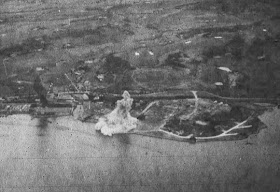Going to movies has always been a popular pastime in Taiwan. Perhaps even more so in Tamsui. There were 4 theaters in this tiny town of ours. The oldest 淡水戲院, a no-name open-air movie theater, and the newer 光復戲院 are all gone. 淡江戲院, the second oldest, is the lone survivor, still in business today.
淡水戲院 was initially for showing 新劇, Broadway-style plays with real actors until later conversion into a movie house. It had rows of long wooden benches, quite uncomfortable and yet the theater was usually packed. It was burn down in 1992, never re-built. 光復 went into bankruptcy around the same time; it did not survive the economic hardship in Tamsui brought on by the MRT construction starting in 1988. And the no name one, across the street from 淡江 was really only temporary anyway.
In the 50s, there were two major types of movie-goers in Tamsui, older Tamsui-lang who preferred Japanese movies and the garrison force soldiers who were partial to 國語片. The tickets cost NT$2.00, half price for the soldiers. Kids were far less discriminating, we saw everything. It was raised to NT$5.00 in the 60s to accommodate the increasing college student population in town; by then, second-round Hollywood movies dominated.
 |
The old sign on the building reads from right to left, and the newer sign,
left to right, reflecting the change of times |
 |
| New policy: two movies for the price of one and stay as long as you wish |
|
|
In the 50s, lasting into the 60s, to advertise the picture shows, each afternoon, a boxy tricycle-cart equipped with a loudspeaker went around town announcing the new arrivals. Or one could simply look up the posters pasted onto display boards in your neighborhood (above).
To enjoy first-round movies in air-conditioned comfort, one could always travel by train (now the MRT) to Taipei. On weekends, on a date, perhaps. And pay through your nose for the exorbitant ticket price, usually 3 times more than Tamsui, even more if you purchased 黃牛票. Of course, there were other amenities, each seat was assigned and well-stocked concession stands, for example. And at a time when not many understood English or other foreign languages except maybe Japanese, the free hand-out "本事", a synopsis of the movies, was a must. An example from 1965 is shown below:
And the movie was of course:
 |
| To the right of D-DAY: "with Chinese subtitles" |















